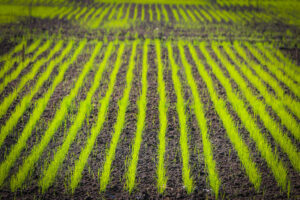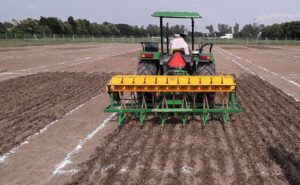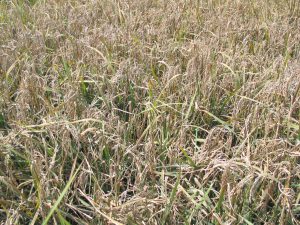
“Rice is life” truly lives up to its meaning in India, where its origin dates back to as long ago as 2500 B.C. In this vast country, rice is a staple food for more than half of its billion-plus population, and a source of livelihood for more than 50 million households. Apart from its economic and strategic importance, rice is also deeply engraved in the rich Indian tradition and culture. Rice offerings are common on many auspicious occasions to bring good health and prosperity to family members. Families bless newlywed couples by showering rice on their heads for prosperity and good luck (photo above). The significance of rice extends beyond life for many Indian communities. Rice is used in many rituals, including offerings of it to the departed soul.
While growing up in a small town in eastern India, we were frequently reminded by our parents not to waste rice as it would alienate Lakshmi, the Hindu goddess of wealth, fortune, and abundance. Numerous such instances can be cited to bolster the cultural and social significance of rice in India.
On the global front, India has the largest area under rice cultivation, but falls behind China in terms of volume of production. In the past 50 years, Indian rice production has nearly tripled with the introduction of semidwarf modern varieties as part of the Green Revolution technology package. During this period, production has been able to keep up with population growth, with a steady increase in per capita production throughout the Green Revolution era in the 70s and 80s, before flattening out in the 90s and finally declining in the 21st century. An overlay of per capita consumption on per capita production clearly reveals that consumption was a shadow of production until the early 90s. But, since then, per capita consumption has been declining at a faster rate than per capita production—making India a rice surplus country. The decrease in rice consumption, which started in the early 90s, coincided with economic reforms and trade liberalization that resulted in higher economic growth and diversification from rice to more high-value products.
The decline in average per capita rice consumption enabled India to become the second-/third-largest rice exporter in the world, accounting for as much as 20% of the market share in some years. It is also interesting to note that strong economic growth in the past decade resulted in the diversification of the food basket away from rice for all income groups. Furthermore, per capita rice consumption among the lower income groups of both the urban and rural population also dropped over this period.
Despite the decline in per capita rice consumption, however, total consumption continued to climb because of growing population. The drastic drop in production in 2002 and 2003 because of drought made buffer stocks fall to a level not witnessed in decades. During this precarious food situation, the onset of a global food crisis prompted the government to protect the domestic supply by imposing a ban on non-basmati rice exports in late 2007. Although the export ban was later replaced by a minimum export price for a few months, the government eventually re-imposed the ban in early 2008.
__________________________________________________________________________________________











